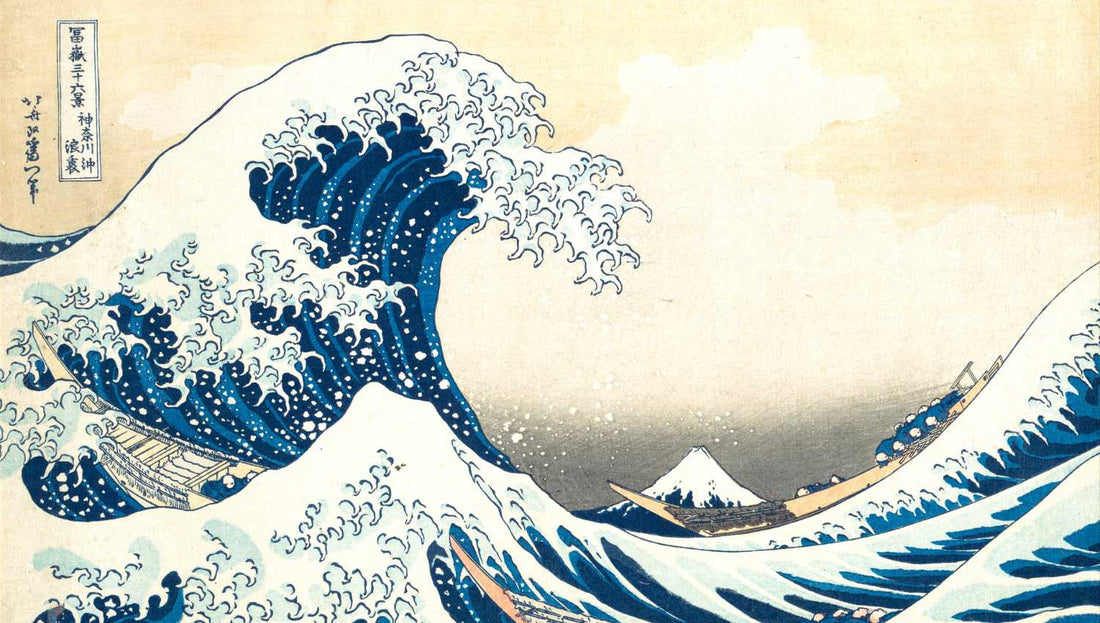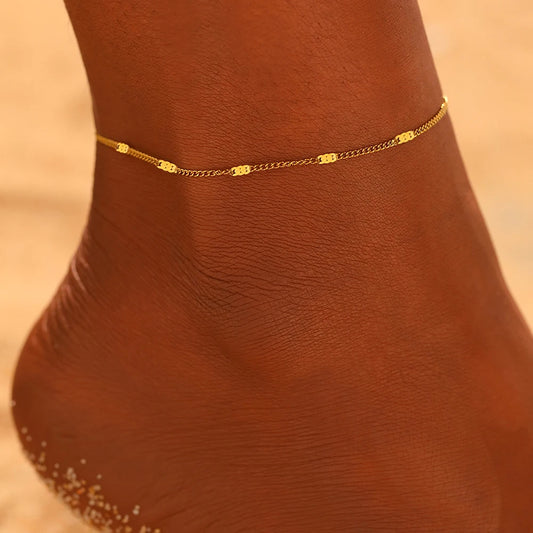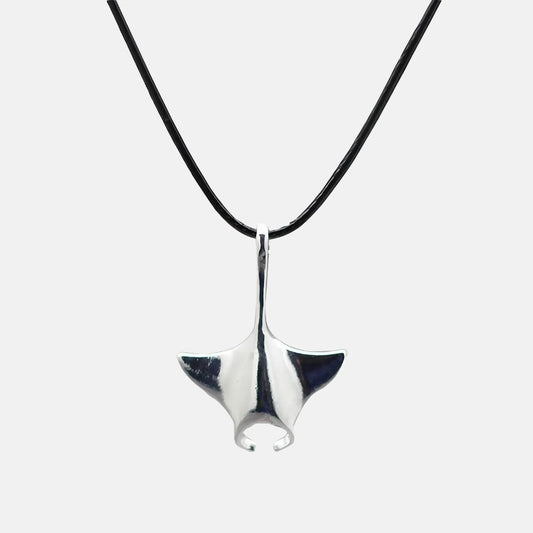
The Great Wave off Kanagawa
The Great Wave off Kanagawa is one of the most famous works of art in Japanese art history. This iconic painting by Hokusai captures the power and majesty of the sea in a remarkable way. It is a symbol of the force of nature , freedom and the beauty of the sea.
In this article, we'll delve into the history of The Great Wave Off Kanagawa, uncover the secrets of its creation , and explore the hidden meanings of this iconic work of art. We will see how it has inspired generations of artists, and how it continues to touch the hearts and minds of the people who contemplate it. We will also discover the different interpretations of this work of art, which give it its depth and richness .
We will see how The Great Wave off Kanagawa became one of the most important symbols of Japanese culture , and how it has spanned the centuries to become one of the most famous works of art in the world. Ready to embark on an artistic adventure? Let's go on an exciting journey through The Great Wave Off Kanagawa!
Additionally, we will see how The Great Wave Off Kanagawa was influenced by Japanese culture and traditions , and how it was perceived in the context of the era in which it was created. We will also discover the techniques used by Hokusai to create this work of art , and how he managed to capture the power and majesty of the sea with such precision .
Finally, we will see how The Great Wave off Kanagawa has spanned the centuries to become one of the most famous works of art in the world. We'll discover how it has been received by art critics, collectors and art lovers over the years, and how it has been inspired by artists and creators from all walks of life.

Who is the author of The Great Wave Off Kanagawa?
Hokusai is the author of The Great Wave Off Kanagawa, a Japanese artist who marked art history with his iconic painting. He was a passionate artist, fascinated by the power and majesty of the sea. He spent hours contemplating the waves crashing on the beach, dreaming of capturing that energy on canvas. He was a talented and determined artist, who devoted his life to painting and art.
Hokusai was a visionary artist, who managed to capture the beauty and power of the sea in a remarkable way. He succeeded in translating the movements of the sea into a painting that gives off an impression of movement and power. He managed to translate the emotions he felt in front of the sea into a work of art that speaks to everyone. He was an artist who managed to transcend the limitations of painting to create a work of art that speaks to everyone.
Hokusai was an artist who managed to create a work of art that has spanned the centuries, which continues to touch the hearts and minds of the people who contemplate it. He was an artist who managed to create a work of art that inspired generations of artists, which became a symbol of Japanese culture. He was an artist who succeeded in creating a valuable work of art, which became a jewel of Japanese culture.
Hokusai was an artist who managed to create a work of art that transcends the limits of painting to become a symbol of Japanese culture, a symbol of art, poetry and freedom . He was an artist who succeeded in creating a work of art that speaks to all people, that speaks to all generations.

Who was Katsushika Hokusai?
Katsushika Hokusai was a 19th-century Japanese artist, considered one of the greatest Japanese artists of all time. He is best known for his work The Great Wave off Kanagawa, which is considered one of the most famous works of art in the world.
He was also a painter, illustrator, engraver and draftsman, and was an expert in the use of woodcuts. He also worked in other art forms such as prints, silk paintings and caricatures.
He lived between 1760 and 1849, He also used several stage names throughout his life, and is known as Hokusai Katsushika after his name. He was a prolific artist, producing thousands of works during his lifetime, and his influence has continued to be felt in Japanese and international art until today.
19th century Japanese artist
Katsushika Hokusai was a 19th-century Japanese artist, considered one of the greatest Japanese artists of all time.
Famous for The Great Wave off Kanagawa
He is best known for his work The Great Wave off Kanagawa, which is considered one of the most famous works of art in the world.
Versatile
He was a painter, illustrator, engraver and draftsman, and was an expert in the use of woodcut. He also worked in other art forms such as prints, silk paintings and caricatures.
Using multiple artist names
He also used several stage names throughout his life, and is known as Hokusai Katsushika after his name.
Prolificacy
He was a prolific artist, producing thousands of works during his lifetime, and his influence has continued to be felt in Japanese and international art until today.

When was The Great Wave off Kanagawa created?
Hokusai", was created in the early 1830s by the famous Japanese artist Hokusai. This iconic work of ukiyo-e art (literally "images of the floating world") depicts a large breaking wave overlooking fishermen and their boats.
It's hard not to be amazed by the power and majesty of the wave, which seems about to sweep over the world. The waves crest and the sea appears to boil, while the dark clouds above the scene add a dramatic note. This image is both beautiful and frightening, reflecting the force of nature that can be both destructive and majestic.
It's fascinating to think about how Hokusai created this work over 180 years ago. He must have used artisanal techniques to carve the intricate details of the wave onto wood, and he must have taken inspiration from nature to create this striking image. Today, the Great Wave off Kanagawa is considered one of the most famous works in art history, and it continues to inspire artists around the world.
Let the imagination carry you away and imagine yourself on a boat in the middle of this raging sea, feeling the wind blowing through your hair and the rain lashing your face, while you contemplate the majestic beauty of The Great Wave off Kanagawa. It's a moment that will stay with you forever, a moment when you witnessed the true essence of life: the power of nature.

Where can you see The Great Wave off Kanagawa today?
The Great Wave of Kanagawa, Hokusai's iconic work, is now on display in museums around the world, giving you the opportunity to contemplate its majestic beauty in person. Imagine standing in front of this famous image, gazing at the crashing waves and churning sea, while the dark clouds add drama to the whole picture.
National Museum of Western Art in Tokyo
You could head to the National Museum of Western Art in Tokyo, where the original is on permanent display. This museum is a true cultural gem, housing works by artists from around the world, so you can enjoy a unique visiting experience.
Orsay Museum in Paris
Or perhaps you would prefer to head to the Musée d'Orsay in Paris, where The Great Wave is on display regularly. The Musée d'Orsay is a magnificent building, a former train station transformed into a museum, which houses an impressive collection of works of art from Western Europe. It is a must-visit place for lovers of art and architecture.
Hokusai Museum
If you prefer a more intimate experience, you might consider visiting a small museum dedicated to Hokusai, where you can get a more detailed look at his work and life. There is also the possibility of seeing reproductions of this work in books, magazines, clothing, accessories, tattoos, posters and much more.
No matter where you choose to view The Great Wave off Kanagawa, you won't be able to help but be amazed by the power and majesty of this famous image. It is a work that continues to captivate minds and spark the reverie of generations.

What is the deeper meaning of The Great Wave Off Kanagawa?
The deeper meaning of The Great Wave off Kanagawa is not clearly established as it is open to different interpretations. However, some ideas have been put forward to explain the symbolism of this famous image.
A common interpretation is that the wave represents the force of nature, which can be both destructive and majestic. The wave's imposing size and menacing appearance can symbolize the power of nature, while the beauty of the wave's shape and its presence in a natural landscape can symbolize serenity and peace.
Other interpretations suggest that the wave represents life's trials and the ability to overcome them. The fishermen and their boats in the image could symbolize individuals navigating difficult times in life, and the wave could represent the trials they face.
It is also possible that Hokusai simply wanted to represent the beauty of nature and the sea, without any hidden meaning.
It is important to note that most works of art, including The Great Wave off Kanagawa, can be interpreted in different ways depending on one's perspective. It is therefore possible that the deeper meaning of this image is different for each person who looks at it.
The force of nature
The Great Wave off Kanagawa features a gigantic wave towering over fishermen, symbolizing the imposing and powerful force of nature. It reminds viewers of the power of the sea and nature in general, which can be both beautiful and terrifying.
The transience of life
The presence of fishermen in the image reminds viewers of the fragility of human life in the face of the force of nature. The fishermen appear small and insignificant against the wave, reminding everyone that life is fleeting.
Harmony between man and nature
Despite the power of nature, the fishermen are depicted riding the wave, rather than being swept away by it. This shows the harmony possible between man and nature, where we can coexist by respecting and learning to live with the forces of nature.
Contemplation of nature
The Kanagawa Wave is considered the perfect example of the aesthetics of the Hokusai school, which emphasizes simplicity, precision and the beauty of nature. It invites viewers to contemplate nature, to marvel at its power and majesty, and to learn about our place in the universe.
The symbolism of the wave
The wave is a universal symbol in many cultures, it is often seen as representative of life itself, with its ups and downs, its moments of calm and its moments of storm. The Kanagawa Wave reminds us that life is full of movement and change, and that we must learn to swim with the waves rather than drown in them.

How did Hokusai manage to capture the power and majesty of the sea in The Great Wave Off Kanagawa?
Hokusai managed to capture the power and majesty of the sea in The Great Wave off Kanagawa using several artistic techniques.
He used a technique called "ukiyo-e"
This technique involves engraving designs onto wood and then using these engravings to print images onto paper or fabric. This technique allowed him to create highly detailed images with shades of gray to suggest depth and texture.
Hokusai used unusual perspectives and angles to make the image more dramatic
The wave is depicted so as to tower over the fishermen and their boats, giving the impression that it is about to break over them. This adds a sense of urgency and danger to the image.
He used contrasting colors to emphasize the power of the wave
The colors are very saturated, with hues of blue and white to represent water, and hues of gray and black to represent clouds and waves. This enhances the visual effect of the power of the wave.
Hokusai used lines to suggest the movement of water and waves
He used curves to suggest the shape of waves and crests, and straight lines to suggest the force of the moving water. All of these techniques combined allowed Hokusai to capture the power and majesty of the sea in The Great Wave off Kanagawa.

How was The Great Wave off Kanagawa perceived in the context of the time it was created?
The Great Wave off Kanagawa was created in the early 1830s, during Japan's Edo era, a period of peace and prosperity that lasted more than 260 years. It was created by Hokusai , a Japanese artist famous for his ukiyo-e style, who produced a large number of prints (images printed on paper or fabric) popular with the middle class of the time.
At the time of its creation, The Great Wave off Kanagawa was considered a work of folk art, intended to be sold and enjoyed by middle-class art enthusiasts. It was seen as an aesthetic image rather than a profound symbol or social commentary.
It is important to note that ukiyo-e images, including The Great Wave off Kanagawa, were generally considered entertainment for ordinary people, rather than serious works of art intended for a cultural elite.
Ukiyo-e images were often used to depict aspects of everyday life, nature scenes, fictional characters, or popular stories. The Great Wave off Kanagawa was therefore seen as an interesting image to contemplate, rather than a work with deep meaning.
However, over time, The Great Wave off Kanagawa took an important place in art history and became one of the most famous images in Japanese art history, as well as an icon world-renowned cultural heritage.

What is the impact of The Great Wave off Kanagawa on Japanese art and culture?
The Great Wave off Kanagawa had a significant impact on Japanese art and culture.
First, she helped popularize ukiyo-e printmaking , a Japanese art style that reached its peak during the Edo era (1603-1868). She also inspired many Japanese artists to pursue this path and create similar images. The Great Wave off Kanagawa has become a symbol of ukiyo-e printmaking and is widely considered one of the most famous works in this tradition.
It also had an impact on Western art , being one of the first Japanese works to be known in the West. Western artists were inspired by the woodblock printing techniques and unusual perspectives used in Hokusai's work, and this led to the emergence of new art movements such as art nouveau and fauvism.
Additionally, The Great Wave off Kanagawa has become a major cultural symbol in Japan and around the world. It is often used to represent Japan, and has become a symbol of Japanese culture in general. It is found in derivative products, tattoos , posters , clothing , accessories , etc.
Finally, this image continues to inspire generations and arouse the reverie of people who contemplate it, it remains a symbol of the strength and majesty of nature, and of the capacity of art to capture these ephemeral moments of the life.

Why is The Great Wave off Kanagawa considered one of the most famous works of art in the world?
The Great Wave off Kanagawa, also known as The Wave, is considered one of the world's most famous works of art due to its visual simplicity, emotional power and technical skill.
The composition of the image, which features a gigantic wave towering over fishermen, is considered the perfect example of the aesthetics of the Hokusai school, which emphasizes simplicity, precision and beauty of nature.
In addition, the use of the color blue to represent the sea and the wave adds an emotional dimension to the work. Finally, The Wave is also considered one of the most important works in the history of Japanese art
The visual simplicity of the image
The Great Wave off Kanagawa features a simple, clean composition that features a gigantic wave towering over fishermen . This visual simplicity allows the work to focus on the emotional power of the wave itself.
The emotional power of the work
The Kanagawa Wave is considered one of the most famous works of art in the world due to its emotional power . The wave is depicted as an imposing and powerful force that towers over the fishermen, which elicits an emotional response from the spectators .
Hokusai's technical skill
Hokusai was an incredibly talented and technical artist, and The Kanagawa Wave is one of his most famous masterpieces. He used woodcut techniques to create the work, and the precision and fine detail in the wave and waves is remarkable.
The aesthetics of the Hokusai school
The Kanagawa Wave is considered the perfect example of the aesthetics of the Hokusai school, which emphasizes simplicity , precision and the beauty of nature. The work reflects this aesthetic by showing nature in all its power and majesty.
Importance of the work in the history of Japanese art
The Kanagawa Wave is considered one of the most important works in the history of Japanese art. She has become a symbol of Japanese art around the world and has inspired many artists across generations. It remains a symbol of Japanese culture to this day.

How has The Great Wave Off Kanagawa been received by art critics and collectors over the years?
The Great Wave off Kanagawa has been received with great acclaim by art critics and collectors over the years. When created in 1830, the work was enthusiastically received by Japanese art critics of the time for its composition, aesthetics, and technical skill.
In the years that followed, the work continued to gain popularity, notably through its presence in exhibitions of Japanese art in Europe and the United States. Western critics also appreciated the work for its visual simplicity , emotional power and technical skill.
Positive reception when it was created in 1830
When created in 1830 , The Great Wave off Kanagawa was enthusiastically received by Japanese art critics of the time for its composition, aesthetics, and technical skill . Critics appreciated the work's visual simplicity, emotional power and technical skill.
Growing popularity at Japanese art exhibitions in Europe and the United States
In the years that followed, the work continued to gain popularity , particularly through its presence in exhibitions of Japanese art in Europe and the United States . Western critics also appreciated the work for its visual simplicity, emotional power and technical skill.
International recognition
The Kanagawa Wave has become an icon of Japanese art, and is considered one of the most famous works in Japanese art history.
The Kanagawa Wave as a symbol of Japanese art
The Kanagawa Wave has become a symbol of Japanese art around the world and has inspired many artists across generations. It remains a symbol of Japanese culture to this day.
Availability of the work in series
It is important to note that The Wave was a wood engraving that was produced in series , which is why there are several copies of the work that are still available today. This allowed many collectors to acquire a copy of the work, contributing to its popularity and recognition.

What techniques did Hokusai use to create The Great Wave Off Kanagawa?
Hokusai used the woodcut technique to create The Great Wave off Kanagawa. This technique involves engraving designs onto a wooden plate and then printing reproductions of the work using a printing press.
To create the work, Hokusai first drew the pattern on a wooden plate. He then used tools to carve the details of the image into the wood, removing layers of wood to create areas of light and shadow. Once the image was engraved on the wooden plate, he then coated it with ink and pressed a sheet of paper against the plate to transfer the image onto the paper.
This woodcut technique is known to be very technical and precise, and Hokusai was an expert in its use. He used this technique to create many masterpieces including The Kanagawa Wave which is considered one of his greatest achievements .
Using the woodcut technique
Hokusai used the woodcut technique to create The Great Wave off Kanagawa. This technique involves engraving designs onto a wooden plate and then printing reproductions of the work using a printing press.
Drawing the pattern on a wooden plate
Hokusai first drew the pattern on a wooden plate. He then used tools to carve the details of the image into the wood, removing layers of wood to create areas of light and shadow.
Engraving details on wood veneer
He then used tools to carve the details of the image into the wood, removing layers of wood to create areas of light and shadow. This technique was very technical and precise, Hokusai was an expert in its use.
Use of ink
Once the image was engraved on the wooden plate, he then coated it with ink and pressed a sheet of paper against the plate to transfer the image onto the paper .
Hokusai's expertise in the use of woodblock printing
Hokusai was an incredibly talented and technical artist, and The Kanagawa Wave is one of his most famous masterpieces. He used this technique to create many masterpieces, including The Kanagawa Wave which is considered one of his greatest achievements .

What is the original name of The Great Wave off Kanagawa in Japanese?
“The Great Wave off Kanagawa” is an iconic work of Japanese art that was created in the 19th century by Japanese artist Hokusai. Although this work is widely known by its Western name, "The Great Wave off Kanagawa", its original name in Japanese is " Kanagawa-oki nami-ura ".
The name "Kanagawa-oki nami-ura" is formed from two distinct Japanese words, " Kanagawa " and "n ami-ura ". "Kanagawa" refers to the coastal region of Kanagawa in Japan, where the city of Yokohama is located and this work depicts a view of this region. "Nami-ura" means "sea wave" or "river wave", which is also depicted in the work.
The name "Kanagawa-oki nami-ura" is also often abbreviated to "Kanagawa Oki Nami Ura" and is written in Japanese characters "神奈川沖浪裏" in art catalogs and exhibitions .
It is important to note that Hokusai's work is also known by other names in Japanese, such as " Shinkai no Umi " (The Deep Sea) or " Fukei-zu " ( View from the Sea ). These names are often used to describe the same image of the great wave, but they may have slightly different meanings or be used in different contexts.
In summary, the original name of "The Great Wave of Kanagawa" in Japanese is "Kanagawa-oki nami-ura", which means " Kanagawa sea wave " and refers to the coastal region of Kanagawa, where the city is located. of Yokohama, where this work is supposed to represent. It is also known by other names in Japanese such as "Shinkai no Umi" and "Fukei-zu".

Are there any works similar to The Great Wave off Kanagawa?
There are many works similar to "The Great Wave off Kanagawa" that have been created by other Japanese artists over the centuries. These works may be similar in style, subject matter, or technique, but they all have their own uniqueness.
The Great Wave off Kanagawa II" by Hokusai
This work is considered a sequel to the original work and is also made using the woodblock print technique. Both works depict crashing and crashing waves, but "The Great Wave off Kanagawa II" is smaller than the original and is often considered more detailed.
Utagawa Kuniyoshi
Other Japanese artists have also created works similar to "The Great Wave off Kanagawa", such as Utagawa Kuniyoshi who created "The Great Wave off the Coast of Awa" which is also inspired by the coastal region of Kanagawa.
In addition, there are similar works of different styles of art such as paintings, engravings , photographs , illustrations, or even sculptures , which take up the theme of the great wave, but in different styles.
It is important to note that although these similar works may be inspired by "The Great Wave off Kanagawa", each of them has its own unique interpretation and story. Works similar to "The Great Wave off Kanagawa" can be appreciated for their own artistic merit and for their contribution to the depiction of the great wave in Japanese art.

Conclusion on The Great Wave off Kanagawa
The Great Wave off Kanagawa is a Japanese print created in the 19th century by the Japanese artist Hokusai. This Japanese print became famous for its depiction of the crashing wave in front of Mount Fuji .
It was printed by the Japanese woodblock printer, using the woodcut technique. It is considered one of the greatest works of Japanese printmaking. It is often compared to the works of Japanese painters like Hiroshige and Western painters like Van Gogh and Gauguin who were inspired by Japonisme .
The Great Wave of Kanagawa is on display in many museums such as the Musée Guimet , where it is often studied for its broader analysis of Japanese culture. This work is known for its use of the color Prussian blue and for its detailed first shot of the wave.
Prints of this Japanese print were widely distributed and influenced many contemporary artists, including manga illustrators and printmakers. The Great Wave off Kanagawa is considered one of the most famous works of Japanese art and continues to inspire painters, printmakers and artists of all time.

































